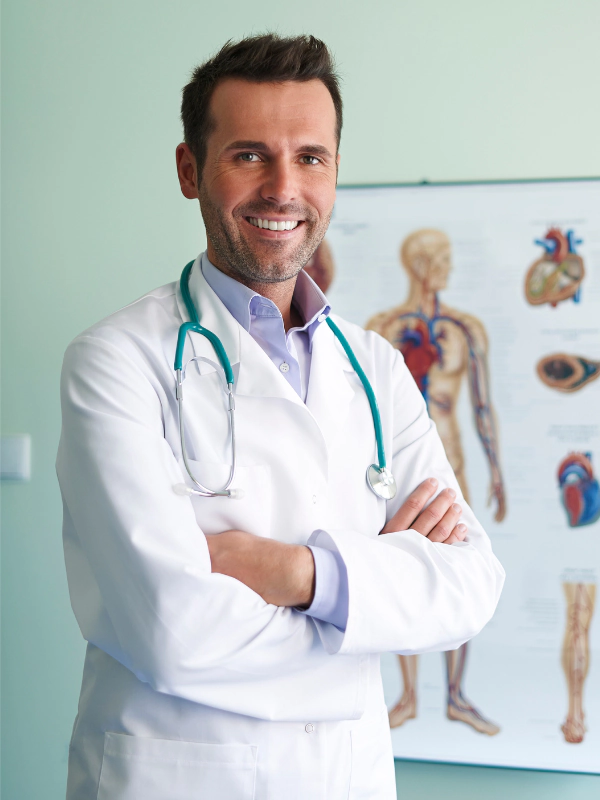Rotator Cuff Repair
What is Rotator Cuff Repair?
Rotator Cuff Repair is a surgical procedure performed to treat a torn rotator cuff, a group of four muscles and their tendons that stabilize the shoulder joint. The rotator cuff allows for shoulder movement and provides the necessary stability for everyday actions like lifting, reaching, and throwing. A tear in the rotator cuff can lead to pain, weakness, and limited shoulder mobility, which may result from injury, overuse, or age-related degeneration. The procedure involves reattaching the torn tendon(s) to the humeral head (upper arm bone) to restore function, reduce pain, and improve the shoulder's range of motion.
How Does the Need for Rotator Cuff Repair Arise?
Rotator cuff tears often occur as a result of acute trauma, such as a fall or lifting something too heavy, but they can also develop gradually due to repetitive overhead motions or degenerative changes as a person ages. Individuals who perform activities requiring overhead movements, such as athletes or manual laborers, are at a higher risk. Symptoms of a rotator cuff tear include shoulder pain, weakness, limited range of motion, and difficulty with tasks like reaching overhead or lifting objects. When non-surgical treatments such as rest, physical therapy, and anti-inflammatory medications fail to relieve symptoms or restore function, rotator cuff repair may be necessary to prevent further damage and improve shoulder function.
Treatment for Rotator Cuff Tears with Repair
Non-surgical treatments like rest, ice, physical therapy, and anti-inflammatory medications are typically used to manage mild rotator cuff injuries. However, when the tear is severe or fails to heal with conservative treatments, surgery is recommended. Rotator cuff repair involves reattaching the torn tendon(s) to the humerus using sutures or anchors. The surgery can be performed through traditional open surgery or a minimally invasive arthroscopic approach, which uses small incisions and a camera for better visualization. The goal is to restore the shoulder's stability and function by healing the torn tendon, thereby reducing pain and improving strength and mobility.
Preparing for Rotator Cuff Repair Surgery
Before undergoing rotator cuff repair, patients typically undergo imaging tests such as X-rays, MRI, or ultrasound to assess the severity of the tear and determine the appropriate surgical approach. A thorough physical examination is performed to evaluate shoulder function, strength, and range of motion. The surgeon discusses the procedure, anesthesia options, and the expected recovery process. Preoperative physical therapy may be recommended to improve shoulder strength and flexibility. Patients are advised to stop taking certain medications, such as blood thinners, before surgery. They should also plan for post-surgery care and rehabilitation to ensure a successful recovery.
What Happens During Rotator Cuff Repair Surgery?
Rotator cuff repair is often performed under general or regional anesthesia, depending on the surgeon's preference and the patient's condition. The procedure may be performed as open surgery or through arthroscopy, which is minimally invasive. The surgeon makes small incisions and inserts a camera (arthroscope) to visualize the shoulder joint. The torn tendon is reattached to the humeral head using sutures or anchors. In some cases, the surgeon may need to remove any damaged tissue or bone spurs that could interfere with the healing process. The procedure generally takes 1-2 hours, depending on the size and complexity of the tear. After the tendon is repaired, the incisions are closed, and the shoulder is immobilized in a sling.
Post-Surgery Recovery for Rotator Cuff Repair
After surgery, patients are monitored in the recovery room for any immediate complications, such as infection or bleeding. Pain management is provided through medications, and the shoulder is typically placed in a sling to protect the repair. In the first few days after surgery, patients are encouraged to follow strict rest protocols to allow the tendon to begin healing. Physical therapy is initiated within the first few weeks, with a gentle range of motion exercises to reduce stiffness and improve flexibility. Patients may gradually begin to increase activity levels as healing progresses. Full recovery time can range from 4-6 months, depending on the severity of the tear and the individual's response to rehabilitation.
Rehabilitation and Long-Term Recovery for Rotator Cuff Repair
Rehabilitation plays a crucial role in restoring strength, mobility, and function after rotator cuff repair surgery. Physical therapy begins early in the recovery process, with an emphasis on regaining shoulder motion and reducing pain. As the tendon heals, patients move on to strengthening exercises to rebuild muscle strength and improve shoulder stability. Return to regular activities may take 4-6 months, while full recovery, including a return to sports or heavy lifting, typically takes 6-12 months. Long-term recovery involves maintaining shoulder strength through regular exercises and avoiding movements that may strain the repaired tendon. Regular follow-up visits with the surgeon help ensure the shoulder is healing correctly and that the repair is stable.
